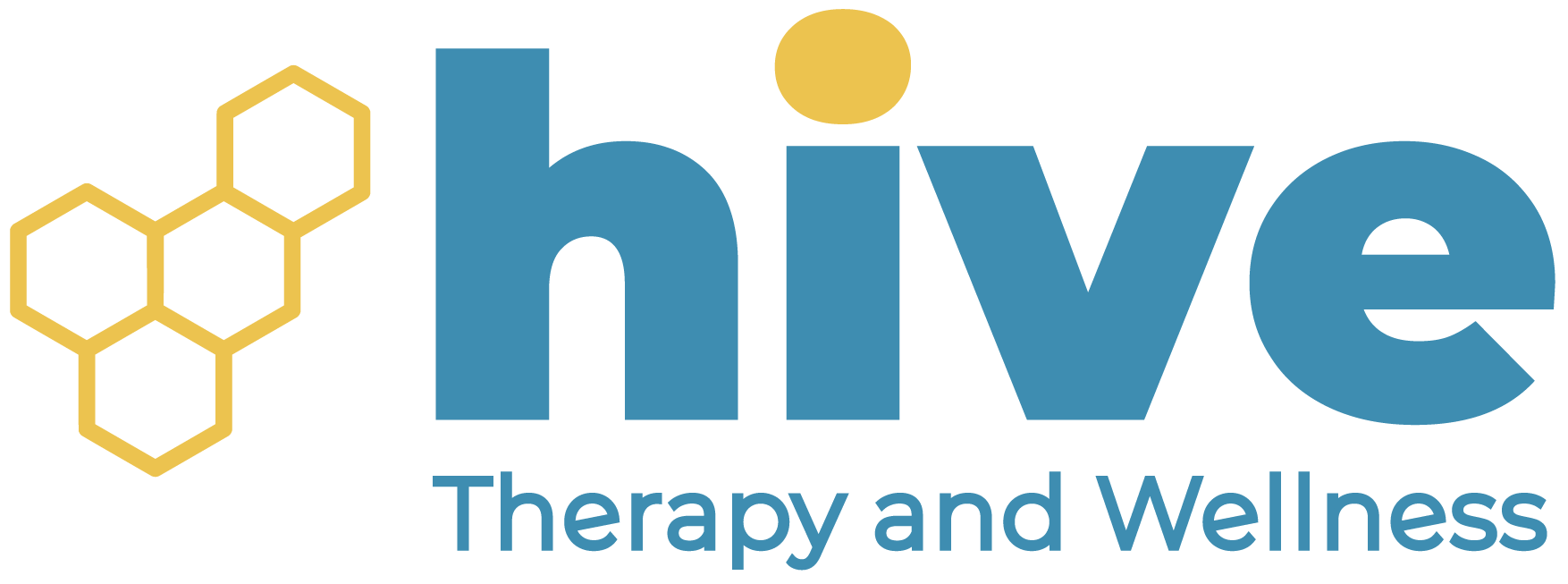Post-Vasectomy Pain Syndrome
Move Better. Live Fuller. Your Wellness Journey Starts Here.
Schedule a FREE Discovery Call!
What Is Post-Vasectomy Pain Syndrome?
A vasectomy is a simple procedure that involves cutting and sealing two tubes located in the scrotum called the vas deferens, which allow sperm to join semen during ejaculation. Although in some cases this procedure can be undone, it is typically intended as a permanent form of birth control for those with a penis.
In most cases, vasectomies are very low risk and are a very simple procedure—most people are able to return home the same day as the procedure with minimal side effects, which typically resolve after a few days. However, in rare cases, people who receive a vasectomy may experience post-vasectomy pain syndrome (PVPS).

This condition involves testicle pain in either one or both testicles that may appear at any point after the procedure (anywhere from days to years afterwards). This pain also lasts for an extended amount of time, usually longer than three months.
Post-vasectomy pain syndrome can be a dull, achy pain that is either constant or intermittent, and may be worse during sexual activity, exercise, or with ejaculation. This pain can vary from person to person, ranging from mild to severe. In some cases, individuals may also experience other symptoms, such as swelling of the epididymis or pain that is felt at the site of vasectomy.
What Causes Post-Vasectomy Pain Syndrome?
Causes of post-vasectomy pain syndrome are unknown. Some research suggests it may form as a result of scar tissue, inflammation, infection, nerve compression, or damage to the vas deferens.
There are many other causes of testicular pain and conditions that can contribute to this pain, and so diagnosing post-vasectomy pain syndrome can be difficult. There is no direct diagnosis test that can identify this condition, so your provider may instead use testing to rule out other possible causes, in addition to a thorough physical examination and evaluation of your symptoms.
Physical Therapy for Post-Vasectomy Pain Syndrome
Unfortunately, there are not many treatment options available for post-vasectomy pain syndrome. Depending on the cause, providers may recommend anti-inflammatory or antibacterial medication. In many cases, surgical treatments can prove successful—but not every person will want to commit to a surgical procedure. Additionally, some surgical procedures may involve restoring the vas deferens and your fertility again, which would be reversing the original intentions of a vasectomy.
This is where pelvic floor physical therapy comes in! Many individuals will want to consider non-surgical treatment first, and pelvic floor therapy can often be effective for managing post-vasectomy pain syndrome. This is because conditions like pelvic floor dysfunction can contribute to the symptoms and pain caused by post-vasectomy pain syndrome.
Pelvic Floor Dysfunction
Pelvic floor dysfunction is tightness, weakness, inflexibility, or a lack of coordination in the pelvic floor muscles. The pelvic floor is an incredibly important group of muscles that each and every person has. The pelvic floor supports your pelvic organs (bladder, bowels, and more) and allows you to urinate, make bowel movements, and experience sexual appreciation and function. It also allows for stability, balance, and proper posture of the body—among many other important jobs.
When things go wrong with the pelvic floor, it can lead to pelvic pain, low back pain, abdominal pain, urinary complications, difficult bowel movements, sexual dysfunction, and more. Tight, inflexible muscles in the pelvic floor and pelvis can even worsen symptoms of post-vasectomy pain syndrome.
Unexpected pain created by post-vasectomy pain syndrome can cause an individual to unintentionally tighten their pelvic floor muscles and other surrounding areas—building more tension that further contributes to pelvic floor dysfunction and worsening your symptoms.
So, how does a pelvic floor therapist address these problems?
There are many different physical therapy treatments that can be used to relieve tension, reduce pain, and improve pelvic floor health. Let’s look at some treatments commonly used at Hive Therapy and Wellness below:
Pain Management
Whether from post-vasectomy pain syndrome, pelvic floor dysfunction, or both, your pelvic floor therapist will be able to provide pain relief using a variety of treatments. The physical therapists at Hive Therapy and Wellness can utilize treatments such as manual therapy, dry needling, tissue scraping, and more to relieve pain and release tension in your muscles.
These treatments are often used on tight, tense muscles such as in the hips, lower back, and abdominals—which are areas that can be both affected by and a cause of pelvic floor dysfunction.
Pelvic Floor Training
To address pelvic floor dysfunction, your pelvic floor physical therapist must address the health of your pelvic floor. They will identify areas of tightness, weakness, or incoordination, and utilize a variety of treatments to improve in these areas.
To encourage better awareness and coordination of the pelvic floor, they will use treatments such as biofeedback and neuromuscular re-education. To relieve tension, you can expect treatments such as manual therapy and relaxation techniques. Lastly, to improve strength and flexibility, your physical therapist will curate a routine of exercises and stretching to target your pelvic floor, hips, back, abdominals, and other necessary areas.
Lifestyle Modifications
As a part of your comprehensive treatment plan, your Hive physical therapist will address any behaviors or habits that may be contributing to your pain or pelvic floor dysfunction. They’ll examine your posture when sitting, standing, or during specific movements to check for any areas of improvement.
They may discuss other aspects with you such as toilet posture or restroom habits, which can contribute to a variety of pelvic floor dysfunction symptoms. Making changes to harmful habits can relieve pressure from the pelvic floor, prevent dysfunction in the future, and assist in relieving your symptoms from post-vasectomy pain syndrome.
Exercise Prescription
As mentioned before, many areas of the body can affect the pelvic floor and build tension throughout the pelvis. In some cases, this can be due to muscle imbalances throughout the pelvis, back, hips, or abdominals. Your physical therapist will curate an exercise routine to build strength in these areas and alleviate pain caused by muscle imbalances.
Spinal Manipulation or Joint Mobilization
One of the suspected causes of post vasectomy pain syndrome is compressed nerves, which can create radiated pain into the scrotum. In this case, your physical therapist may look to correct misalignments in the spine or pelvis, as well as mobilize areas that may have compressed nerves.
These are just some examples of treatments that the physical therapists at Hive Therapy and Wellness may use for patients with post-vasectomy pain syndrome. However, each person’s individual case and symptoms will vary, and their treatment will, too.
Hive’s physical therapists create a treatment plan that is curated to the needs of each patient. Therefore, while receiving physical therapy from Hive, you can expect any of the following treatments to be included in your holistic care plan:
- Neuromuscular re-education
- Manual therapy
- Exercise prescription
- Dry needling
- Cupping
- Tissue scraping
- Behavioral modifications
- Therapeutic activities
- Electrical muscle stimulation
- Spinal manipulation
- Therapeutic modalities
- Biofeedback
A vasectomy is a simple procedure that involves cutting and sealing two tubes located in the scrotum called the vas deferens, which allow sperm to join semen during ejaculation.
Although in some cases this procedure can be undone, it is typically intended as a permanent form of birth control for those with a penis.
In most cases, vasectomies are very low risk and are a very simple procedure—most people are able to return home the same day as the procedure with minimal side effects, which typically resolve after a few days.
However, in rare cases, people who receive a vasectomy may experience post-vasectomy pain syndrome (PVPS).
This condition involves testicle pain in either one or both testicles that may appear at any point after the procedure (anywhere from days to years afterwards). This pain also lasts for an extended amount of time, usually longer than three months.
Post-vasectomy pain syndrome can be a dull, achy pain that is either constant or intermittent, and may be worse during sexual activity, exercise, or with ejaculation.
This pain can vary from person to person, ranging from mild to severe. In some cases, individuals may also experience other symptoms, such as swelling of the epididymis or pain that is felt at the site of vasectomy.
Causes of post-vasectomy pain syndrome are unknown. Some research suggests it may form as a result of scar tissue, inflammation, infection, nerve compression, or damage to the vas deferens.
There are many other causes of testicular pain and conditions that can contribute to this pain, and so diagnosing post-vasectomy pain syndrome can be difficult.
There is no direct diagnosis test that can identify this condition, so your provider may instead use testing to rule out other possible causes, in addition to a thorough physical examination and evaluation of your symptoms.
Unfortunately, there are not many treatment options available for post-vasectomy pain syndrome. Depending on the cause, providers may recommend anti-inflammatory or antibacterial medication.
In many cases, surgical treatments can prove successful—but not every person will want to commit to a surgical procedure. Additionally, some surgical procedures may involve restoring the vas deferens and your fertility again, which would be reversing the original intentions of a vasectomy.
This is where pelvic floor physical therapy comes in! Many individuals will want to consider non-surgical treatment first, and pelvic floor therapy can often be effective for managing post-vasectomy pain syndrome.
This is because conditions like pelvic floor dysfunction can contribute to the symptoms and pain caused by post-vasectomy pain syndrome.
Pelvic Floor Dysfunction
Pelvic floor dysfunction is tightness, weakness, inflexibility, or a lack of coordination in the pelvic floor muscles. The pelvic floor is an incredibly important group of muscles that each and every person has.
The pelvic floor supports your pelvic organs (bladder, bowels, and more) and allows you to urinate, make bowel movements, and experience sexual appreciation and function.
It also allows for stability, balance, and proper posture of the body—among many other important jobs.
When things go wrong with the pelvic floor, it can lead to pelvic pain, low back pain, abdominal pain, urinary complications, difficult bowel movements, sexual dysfunction, and more.
Tight, inflexible muscles in the pelvic floor and pelvis can even worsen symptoms of post-vasectomy pain syndrome.
Unexpected pain created by post-vasectomy pain syndrome can cause an individual to unintentionally tighten their pelvic floor muscles and other surrounding areas—building more tension that further contributes to pelvic floor dysfunction and worsening your symptoms.
So, how does a pelvic floor therapist address these problems?
There are many different physical therapy treatments that can be used to relieve tension, reduce pain, and improve pelvic floor health. Let’s look at some treatments commonly used at Hive Therapy and Wellness below:
Pain Management
Whether from post-vasectomy pain syndrome, pelvic floor dysfunction, or both, your pelvic floor therapist will be able to provide pain relief using a variety of treatments.
The physical therapists at Hive Therapy and Wellness can utilize treatments such as manual therapy, dry needling, tissue scraping, and more to relieve pain and release tension in your muscles.
These treatments are often used on tight, tense muscles such as in the hips, lower back, and abdominals—which are areas that can be both affected by and a cause of pelvic floor dysfunction.
Pelvic Floor Training
To address pelvic floor dysfunction, your pelvic floor physical therapist must address the health of your pelvic floor. They will identify areas of tightness, weakness, or incoordination, and utilize a variety of treatments to improve in these areas.
To encourage better awareness and coordination of the pelvic floor, they will use treatments such as biofeedback and neuromuscular re-education. To relieve tension, you can expect treatments such as manual therapy and relaxation techniques.
Lastly, to improve strength and flexibility, your physical therapist will curate a routine of exercises and stretching to target your pelvic floor, hips, back, abdominals, and other necessary areas.
Lifestyle Modifications
As a part of your comprehensive treatment plan, your Hive physical therapist will address any behaviors or habits that may be contributing to your pain or pelvic floor dysfunction.
They’ll examine your posture when sitting, standing, or during specific movements to check for any areas of improvement.
They may discuss other aspects with you such as toilet posture or restroom habits, which can contribute to a variety of pelvic floor dysfunction symptoms.
Making changes to harmful habits can relieve pressure from the pelvic floor, prevent dysfunction in the future, and assist in relieving your symptoms from post-vasectomy pain syndrome.
Exercise Prescription
As mentioned before, many areas of the body can affect the pelvic floor and build tension throughout the pelvis. In some cases, this can be due to muscle imbalances throughout the pelvis, back, hips, or abdominals.
Your physical therapist will curate an exercise routine to build strength in these areas and alleviate pain caused by muscle imbalances.
Spinal Manipulation or Joint Mobilization
One of the suspected causes of post vasectomy pain syndrome is compressed nerves, which can create radiated pain into the scrotum.
In this case, your physical therapist may look to correct misalignments in the spine or pelvis, as well as mobilize areas that may have compressed nerves.
These are just some examples of treatments that the physical therapists at Hive Therapy and Wellness may use for patients with post-vasectomy pain syndrome. However, each person’s individual case and symptoms will vary, and their treatment will, too.
Hive’s physical therapists create a treatment plan that is curated to the needs of each patient. Therefore, while receiving physical therapy from Hive, you can expect any of the following treatments to be included in your holistic care plan:
- Neuromuscular re-education
- Manual therapy
- Exercise prescription
- Dry needling
- Cupping
- Tissue scraping
- Behavioral modifications
- Therapeutic activities
- Electrical muscle stimulation
- Spinal manipulation
- Therapeutic modalities
- Biofeedback
You can learn more about these treatments on our Treatments Page.





